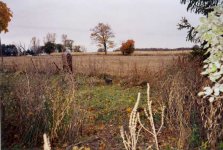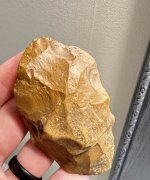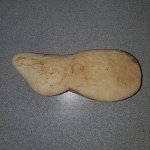Gypsy Heart
Gold Member
"This community, known as the Morton neighborhood, was soon reinforced by ......
Samuel Gardner, who located land in northwest Bingham in 1839 and located as a settler in 1840. He established himself near the line of the road running from DeWitt along Bingham's west line, which highway became a much traveled route for land-seekers enroute to Gratiot and other northern points. Gardner's tavern, named the Gardner House, was built in the northwestern corner of section six. Gardner's Corners soon became a well known point."
Past and Present of Clinton County....together with biographical sketches of many of its prominent and leading citizens and illustrious dead" by D.W.Kelley, Chicago (Ill.): S.J. Clarke Publishing Co., 1906, p. 492. :
.......................................
Among other early comers into the Morton neighborhood were Charles Simpson, William Silverwood, John Avery, and Samuel Gardner. In the year 1840 the extreme northwestern corner of Bingham came to be known as Gardner's Corners, and for many years thereafter the Corners had a reputation that reached far and wide. It was there that Samuel Gardner located a piece of land in 1839, and in February, 1840, he occupied the place as a permanent settler. He was located on the DeWitt road, passing via the west town-line of town 7 (now Bingham) to Gratiot County, and in the year 1840 there was a good deal of travel over that road by land-seekers bound for Gratiot County. Travel naturally suggested a tavern, and during 1840 Mr. Gardner put up a log tavern upon the spot now occupied by one of his grandsons in the northwestern corner of section 6.
Mr. Gardner called his tavern the Gardner House, and the locality Gardner's Corners. At the time mentioned (1840) he had but few neighbors in Bingham. Lucius Morton, Benjamin Finkle, and Joel Bebee were living in the town east of him, but south of him, on the DeWitt road, he knew of no one but William H. and Reuben Norris between Gardner's Corners and DeWitt. Travel on that highway increased as time moved on, and in 1843, to meet the demands of the occasion, Gardner replaced his log tavern with a more pretentious and commodius framed hotel. A portion of it he set apart as a store, and thereafter, between selling goods and keeping tavern, drove a brisk trade. The Gardner House was, too, a place of popular resort for the pleasure-seekers and merry-makers of the adjoining country, and the many jolly dances and similar festive gatherings that marked its busy era are still subjects of enjoyable remembrance among those who took part in them. The country belles in those days were inordinately fond of dancing opportunities, and although they did walk barefooted many miles to a Gardner House ball and carry their shoes to the ball-room door to save the wear of them, they enjoyed the hilarious reunions none the less nor missed one when they could help it.
Business at Gardner's tavern was during the briskest season of travel so great that upwards of sixty teams were kept there overnight, and the receipts of money before ten o'clock in the morning were more than a hundred dollars. Gardner kept the tavern until his death in 1867, and after that his widow carried it on until it was burned in 1872. During 1854, Mr. Gardner built at St. Johns the first tavern put up at the village, although he was himself at no time the landlord of it. In 1857 a post-office called Gardner's Corners was established at Gardner's Hotel, and Mr. Gardner given charge of it. Mail was received from St. Johns, the route being from the latter place to Maple Rapids. Mr. Gardner remained in charge of the office as postmaster until 1863, when it was abolished."
History of Shiawassee and Clinton Counties, Michigan, with Illustrations and Biographical Sketches of their Prominent Men and Pioneers." Philadelphia: D.W. Ensign & Co, 1880:
Samuel Gardner, who located land in northwest Bingham in 1839 and located as a settler in 1840. He established himself near the line of the road running from DeWitt along Bingham's west line, which highway became a much traveled route for land-seekers enroute to Gratiot and other northern points. Gardner's tavern, named the Gardner House, was built in the northwestern corner of section six. Gardner's Corners soon became a well known point."
Past and Present of Clinton County....together with biographical sketches of many of its prominent and leading citizens and illustrious dead" by D.W.Kelley, Chicago (Ill.): S.J. Clarke Publishing Co., 1906, p. 492. :
.......................................
Among other early comers into the Morton neighborhood were Charles Simpson, William Silverwood, John Avery, and Samuel Gardner. In the year 1840 the extreme northwestern corner of Bingham came to be known as Gardner's Corners, and for many years thereafter the Corners had a reputation that reached far and wide. It was there that Samuel Gardner located a piece of land in 1839, and in February, 1840, he occupied the place as a permanent settler. He was located on the DeWitt road, passing via the west town-line of town 7 (now Bingham) to Gratiot County, and in the year 1840 there was a good deal of travel over that road by land-seekers bound for Gratiot County. Travel naturally suggested a tavern, and during 1840 Mr. Gardner put up a log tavern upon the spot now occupied by one of his grandsons in the northwestern corner of section 6.
Mr. Gardner called his tavern the Gardner House, and the locality Gardner's Corners. At the time mentioned (1840) he had but few neighbors in Bingham. Lucius Morton, Benjamin Finkle, and Joel Bebee were living in the town east of him, but south of him, on the DeWitt road, he knew of no one but William H. and Reuben Norris between Gardner's Corners and DeWitt. Travel on that highway increased as time moved on, and in 1843, to meet the demands of the occasion, Gardner replaced his log tavern with a more pretentious and commodius framed hotel. A portion of it he set apart as a store, and thereafter, between selling goods and keeping tavern, drove a brisk trade. The Gardner House was, too, a place of popular resort for the pleasure-seekers and merry-makers of the adjoining country, and the many jolly dances and similar festive gatherings that marked its busy era are still subjects of enjoyable remembrance among those who took part in them. The country belles in those days were inordinately fond of dancing opportunities, and although they did walk barefooted many miles to a Gardner House ball and carry their shoes to the ball-room door to save the wear of them, they enjoyed the hilarious reunions none the less nor missed one when they could help it.
Business at Gardner's tavern was during the briskest season of travel so great that upwards of sixty teams were kept there overnight, and the receipts of money before ten o'clock in the morning were more than a hundred dollars. Gardner kept the tavern until his death in 1867, and after that his widow carried it on until it was burned in 1872. During 1854, Mr. Gardner built at St. Johns the first tavern put up at the village, although he was himself at no time the landlord of it. In 1857 a post-office called Gardner's Corners was established at Gardner's Hotel, and Mr. Gardner given charge of it. Mail was received from St. Johns, the route being from the latter place to Maple Rapids. Mr. Gardner remained in charge of the office as postmaster until 1863, when it was abolished."
History of Shiawassee and Clinton Counties, Michigan, with Illustrations and Biographical Sketches of their Prominent Men and Pioneers." Philadelphia: D.W. Ensign & Co, 1880:



 you make it look easy to find these stories
you make it look easy to find these stories


